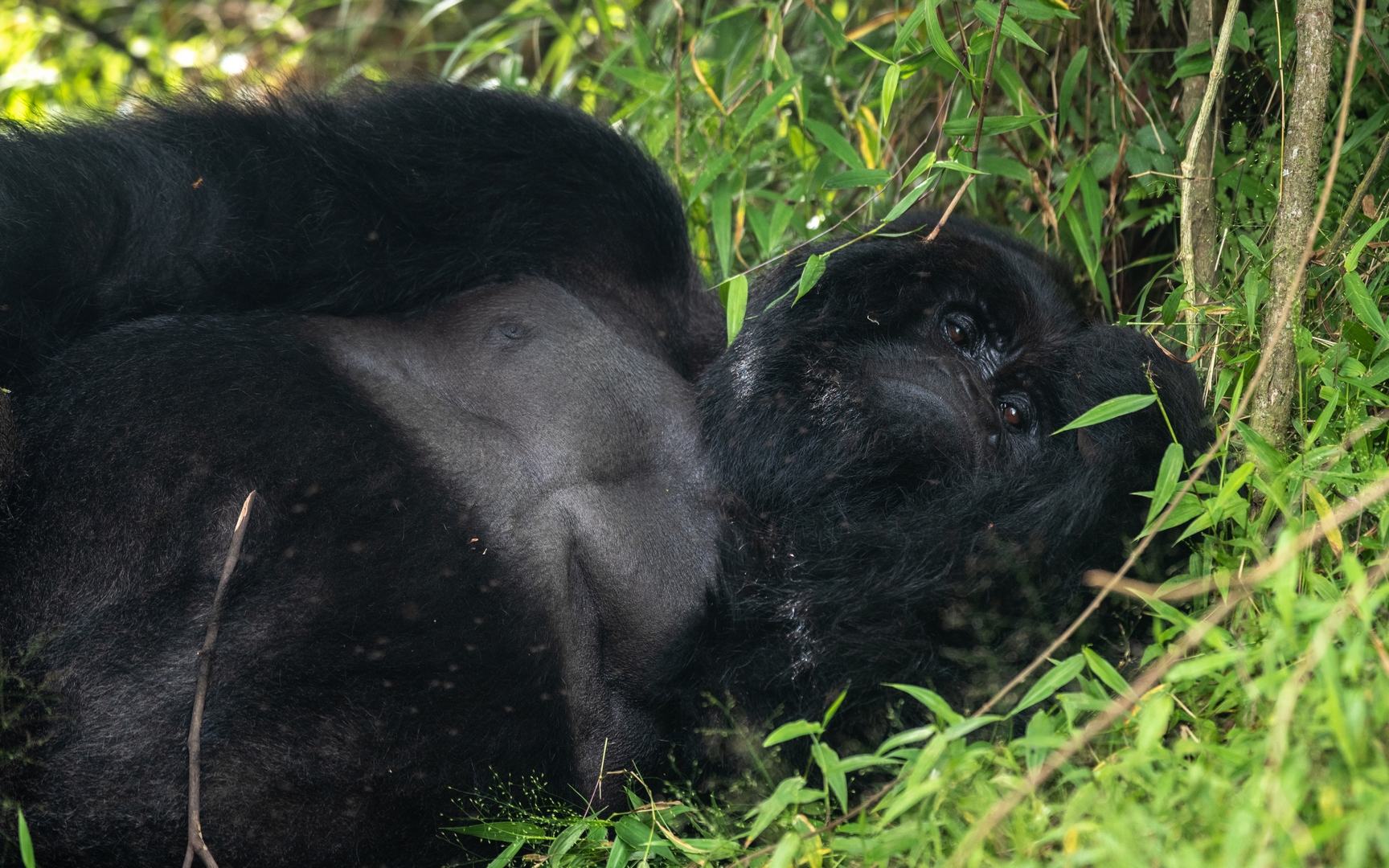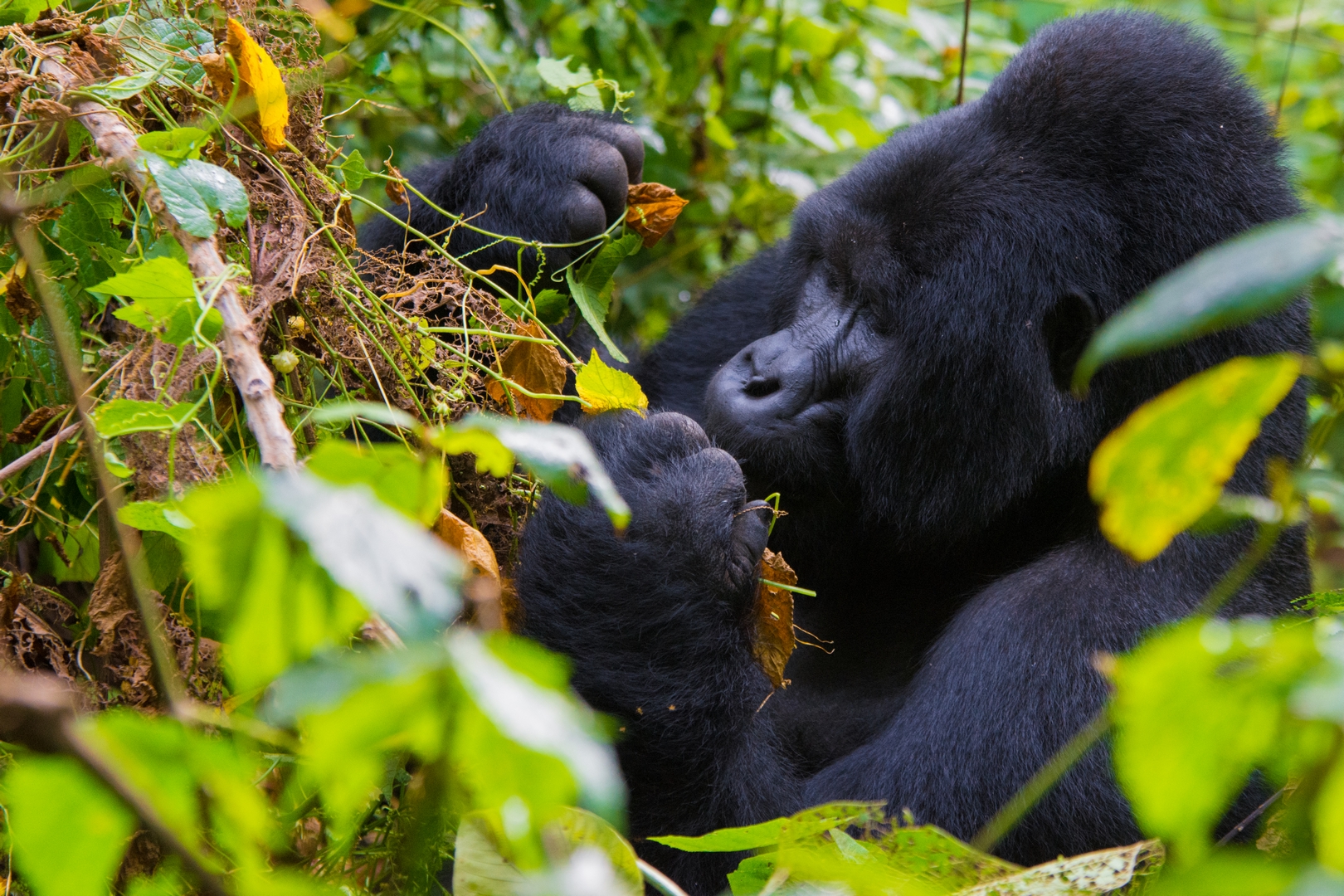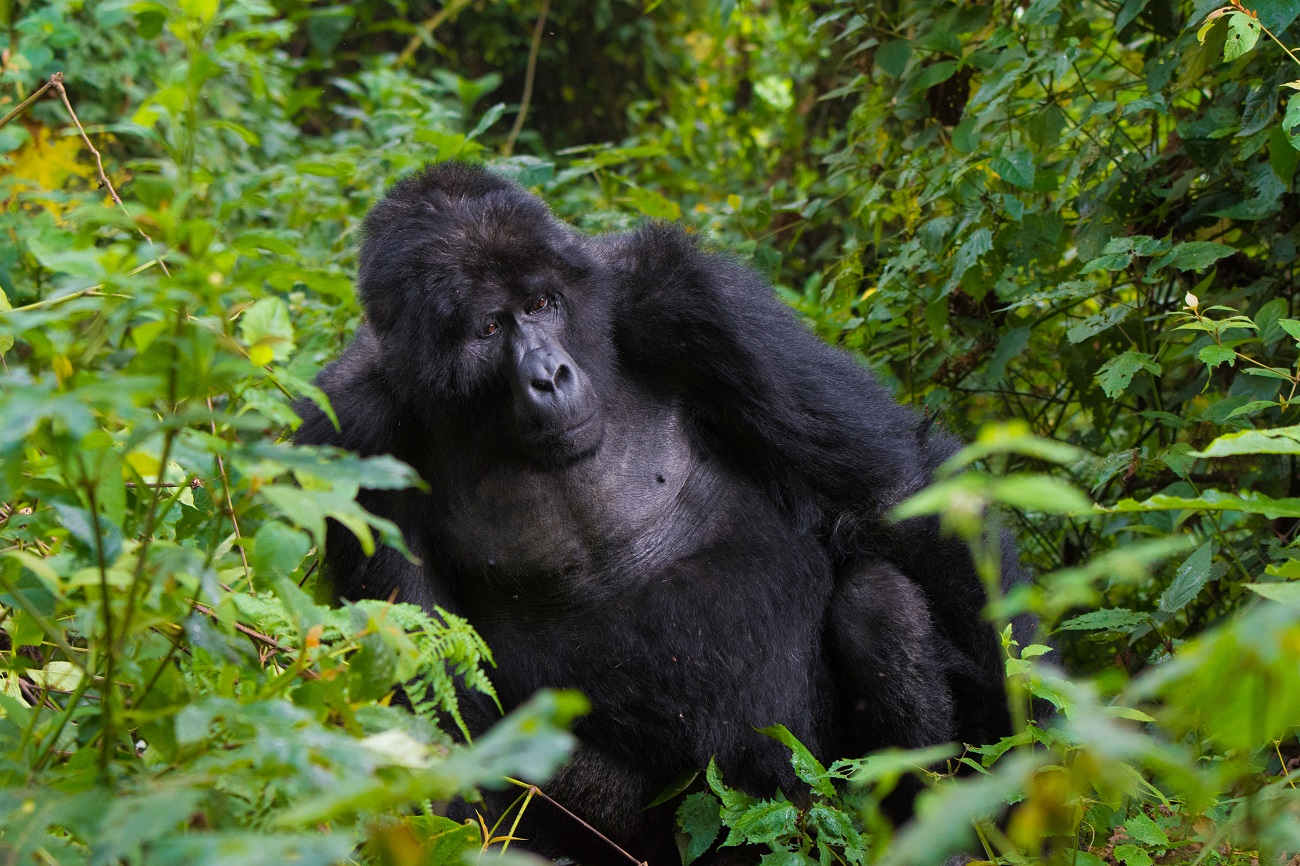Gorilla Trekking in Uganda
Gorilla trekking in Uganda from Kiho Gorilla Safari Lodge is a thrilling and unforgettable wildlife experience that allows you to get up close and personal with these magnificent creatures in their natural habitat. Uganda is one of the best places in the world to go gorilla tracking, and it is home to half of the world’s remaining mountain gorilla population.
Mountain Gorilla trekking in Uganda is a once-in-a-lifetime experience for many travelers, and it provides an opportunity to connect with one of our closest relatives in the animal kingdom while contributing to their conservation. Be sure to plan your trip well in advance and adhere to all the rules and guidelines to ensure a safe and enjoyable experience. Please verify all details and permit costs with the Uganda Wildlife Authority or a reputable tour operator, as prices and regulations may change.
Key Points To Know About Gorilla Trekking In Uganda:
Location
Gorilla trekking in Uganda takes place in two main national parks: Bwindi Impenetrable National Park and Mgahinga Gorilla National Park. Both parks are located in the southwestern part of Uganda, near the border with Rwanda and the Democratic Republic of Congo.
Mountain Gorillas
Uganda is home to the endangered mountain gorillas (Gorilla beringei beringei). These gorillas live in high-altitude forests and are known for their large size and thick fur. They are closely monitored and protected by Ugandan authorities and conservation organizations.

Bwindi Impenetrable National Park
Permit Requirements
To go gorilla tracking in Uganda, you need to obtain a gorilla tracking permit. These permits are limited in number and are typically issued by the Uganda Wildlife Authority (UWA). It is advisable to book your permit well in advance, as they often sell out quickly. As of September 2023, the cost of a gorilla tracking permit is $800 per person plus Kiho Lodge handling fee of $50. However, permit prices may have changed, so it’s important to check for the latest information.
Tracking Experience
Gorilla tracking can be physically demanding, as you’ll be hiking through dense forests and steep terrain in search of the gorillas. Treks can vary in length and difficulty, and the amount of time spent with the gorillas can also vary. Once you locate a gorilla group, you typically have about an hour to observe and photograph them from a safe and respectful distance.
Packing Essentials
When going gorilla tracking, it’s essential to pack appropriate clothing, including long-sleeved shirts, long trousers, sturdy hiking boots, a rain jacket, and a hat. You may also want to bring insect repellent and a small backpack for water and snacks.
Rules and Guidelines
Gorilla tracking is a highly regulated activity, and there are strict guidelines in place to protect both the gorillas and visitors. These guidelines include maintaining a minimum distance from the gorillas, not using flash photography, and following the instructions of your experienced guides.
Best Time to Visit
The best time for gorilla tracking in Uganda is during the dry seasons, which are from June to August and from December to February. However, gorilla trekking is possible year-round, and some people choose to visit during the wetter months to avoid the crowds.
Conservation Efforts
The revenue generated from gorilla tracking permits plays a crucial role in funding gorilla conservation efforts and supporting local communities. Your visit contributes directly to the protection of these endangered animals and their habitat.

Bwindi Impenetrable National Park
Where to go for gorilla tracking in Uganda?
In Uganda, gorilla tracking takes place in two main national parks: Bwindi Impenetrable National Park and Mgahinga Gorilla National Park. Both of these parks offer incredible opportunities to see and interact with mountain gorillas in their natural habitat.
When planning your gorilla tracking experience in Uganda, you can choose between these two national parks based on your preferences for scenery, physical fitness, and available permit dates. Both parks offer a chance to see mountain gorillas in their natural habitat, and the experience is equally rewarding in terms of wildlife encounters and conservation impact.
Remember to book your gorilla tracking permits well in advance, as they are limited in number and tend to sell out quickly. Additionally, it’s a good idea to work with a reputable tour operator to help you plan your trip, arrange permits, and provide experienced guides for your trek.
More on the two gorilla tracking destinations:
Bwindi Impenetrable National Park
Location: Bwindi Impenetrable National Park is located in southwestern Uganda, near the border with Rwanda and the Democratic Republic of Congo.
Gorilla Groups: Bwindi is home to several habituated gorilla groups that are available for trekking. These groups are spread out in different regions of the park.
Landscape: Bwindi is known for its dense, lush forests, and the terrain can be challenging. Tracking in Bwindi can be physically demanding due to steep hills and thick vegetation.
Permits: You will need a gorilla tracking permit to visit Bwindi. The park offers different sectors where you can trek, including Buhoma, Ruhija, Rushaga, and Nkuringo. Each sector has its own gorilla groups, and the choice of sector may depend on permit availability and personal preferences.
Mgahinga Gorilla National Park
Location: Mgahinga Gorilla National Park is also located in southwestern Uganda, near the borders with Rwanda and the Democratic Republic of Congo. It is part of the Virunga Mountains, which are shared by these three countries.
Gorilla Groups: While Mgahinga has one habituated gorilla group, compared to Bwindi, it offers a unique experience of gorilla tracking because of the stunning volcanic landscape.
Landscape: The Park is characterized by volcanic peaks and bamboo forests. Trekking here may involve some steep ascents, but the scenery is spectacular.
Permits: You will need a gorilla tracking permit for Mgahinga as well. The park is home to the Nyakagezi gorilla group, which is the only habituated group in the park.
 When to go for gorilla tracking in Uganda
When to go for gorilla tracking in Uganda
The best time to go gorilla tracking in Uganda is during the dry seasons, as tracking conditions are more favorable, and the chances of encountering rain and mud are reduced. Uganda has two primary dry seasons, and each offers its own set of advantages:
June to August:
- This is the first dry season, often referred to as the “long dry season.” During this time, the weather is generally clear and sunny.
- The trails are drier and less muddy, making tracking easier and more comfortable.
- It’s a popular time for gorilla tracking, so permits may be in high demand. It’s advisable to book your permits well in advance if you plan to visit during this period.
December to February:
- This is the second dry season, known as the “short dry season.” Like the long dry season, it offers relatively stable weather conditions.
- This period is also a great time for gorilla tracking, with fewer tourists compared to the long dry season. You may find it easier to secure permits and have a more intimate experience with the gorillas.
- It’s worth noting that this season coincides with the region’s bird-watching peak, making it an excellent time for bird enthusiasts.
While the dry seasons are generally the most popular times for gorilla trekking, it’s important to keep in mind that gorilla trekking is possible year-round, and each season has its own unique charm. Here are some considerations for other times of the year:
March to May (Wet Season):
- This is the wet season in Uganda, characterized by regular rainfall.
- The trails can be muddy and slippery during this time, making tracking more challenging.
- However, it is the low tourist season, and you may find discounted permit prices and fewer visitors.
September to November (Shoulder Season):
- This period falls between the dry and wet seasons and is considered a shoulder season.
- While there may be occasional rain, it’s a good compromise between weather and visitor numbers.
- Permits may be more readily available compared to the peak dry season.
In summary, the best time for gorilla tracking in Uganda is during the dry seasons (June to August and December to February) if you prefer more comfortable tracking conditions and stable weather. However, if you are looking for cost savings and don’t mind some rain and mud, visiting during the wet or shoulder seasons can also be rewarding. Regardless of the season you choose, it’s essential to book your gorilla tracking permits well in advance, as they are limited and in high demand.
